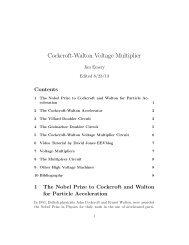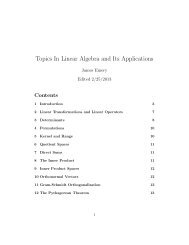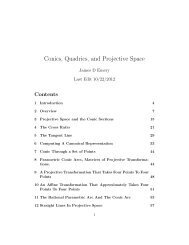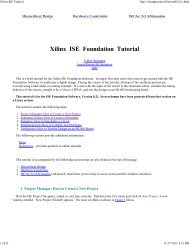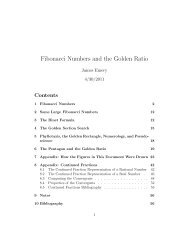Controlling a Rolling Ball On a Tilting Plane - STEM2
Controlling a Rolling Ball On a Tilting Plane - STEM2
Controlling a Rolling Ball On a Tilting Plane - STEM2
Create successful ePaper yourself
Turn your PDF publications into a flip-book with our unique Google optimized e-Paper software.
where s 0 is the initial position. The change in kinetic energy is<br />
m( v2<br />
2 − v2 0<br />
2 )=f(s − s 0)=ma(s − s 0 ),<br />
where f is a constant force of acceleration. Dividing by m/2 weget<br />
v 2 − v 2 0 =2a(s − s 0).<br />
The velocity increases linearly with the time, so the average velocity multiplied<br />
by the time is the distance traveled<br />
The four equations<br />
v + v 0<br />
2<br />
t = v 0 + at + v 0<br />
t<br />
2<br />
=(v 0 + at<br />
2 )t<br />
= v 0 t + at2<br />
2<br />
=(s − s 0 ).<br />
v = v 0 + at,<br />
s = s 0 + v 0 t + a t2 2 ,<br />
v 2 − v 2 0 =2a(s − s 0),<br />
and<br />
v + v 0<br />
t =(s − s 0 ),<br />
2<br />
usually suffice to solve problems of this type.<br />
Example 1. Suppose a ball is rolled off of the edge of a table top. Suppose<br />
the table is at height height h and the ball lands on the floor at a distance<br />
s from a point on the floor below the table edge. What was the horizontal<br />
velocity of the ball as it left the table edge<br />
Solution The ball is accelerated by the acceleration of gravity g downward.<br />
The initial vertical velocity is zero, and the initial vertical position is zero.<br />
So using the second formula<br />
h = g t2 2 ,<br />
9



